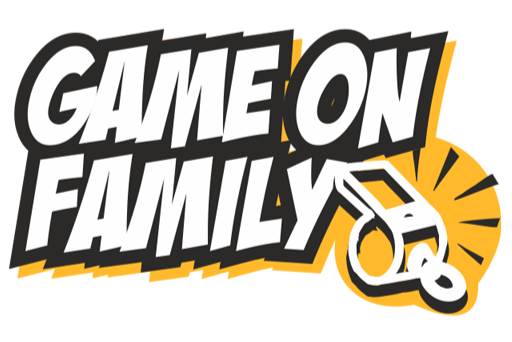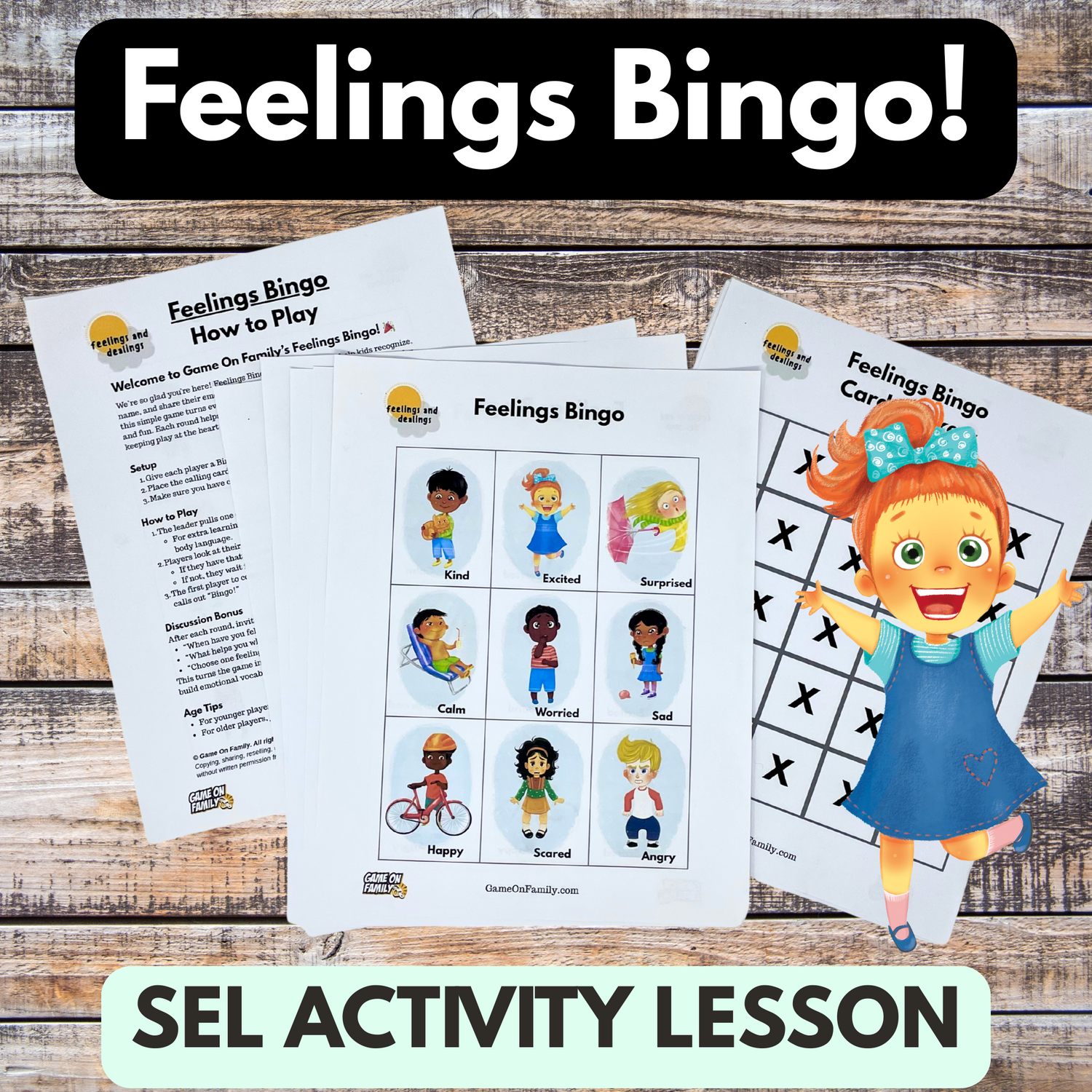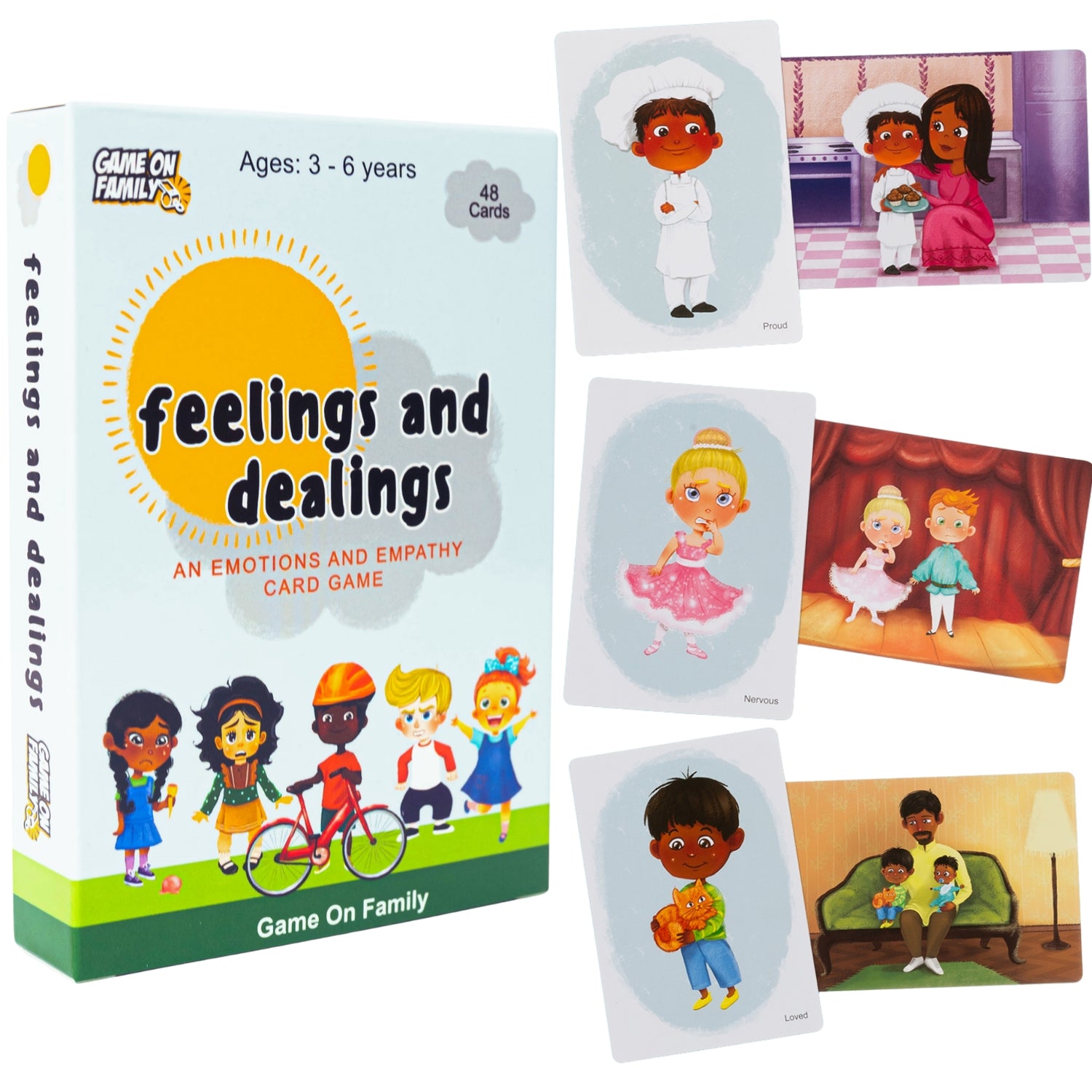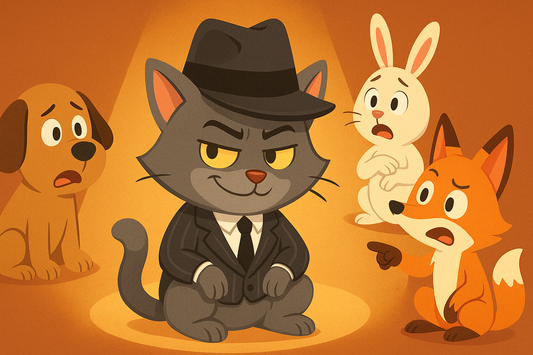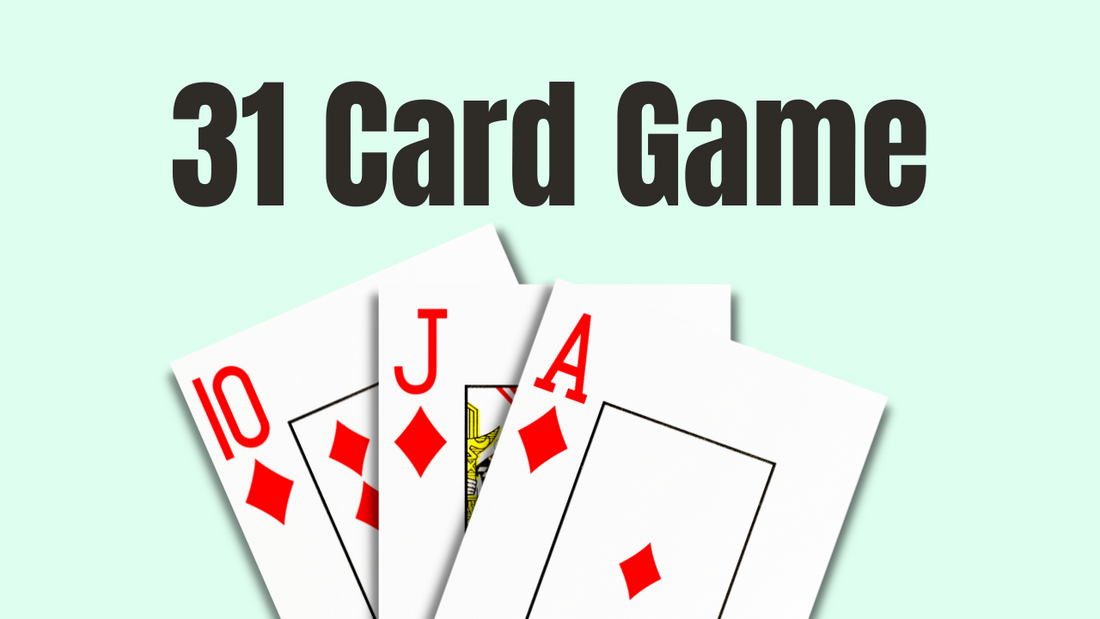
How to Play 31 Card Game
Share
What is the 31 Card Game
The 31 card game, also known as “Scat,” is a game of hand improvement where players swap cards to improve their scores to become as close to 31 points as possible. But get too greedy trying to achieve a perfect score and other players may pass you by. You don’t want to lose sight of the ultimate goal, which is to avoid being the player with the lowest score in a round. If you’re caught with the lowest score, you lose the round and one of your lives.
Objective
The object of each hand is to avoid being the player with the lowest point total in their 3-card hand, who loses one of their lives. The object of the game is to be the last person remaining
Equipment
- Standard 52 card deck (For younger players, you should consider this kids card holder, and fun playing card decks like this Pokemon set or this Minecraft set.
- 3 markers per player (e.g. poker chips, or other objects), for the 3 lives
Number of players
The 31 can be played with two or more players.
Age
31 is a great family game for all ages 5 and up. It’s particularly good for kindergarten and first grade students as it supports many of the math skills they’re building.
Skills
- Addition: 31 is a great game for learning to add numbers 1-31, with an emphasis on adding numbers 1-10.
- Matching like symbols: Like symbols (suits) and like numbers get paired.
- Place value: A lot of the addition is with the number 10, so it supports the basics of place value math skills.
- Experienced Probability: You don’t need statistics skills to play the game, but kids experience probability and outcomes with each decision they make to improve their hand.
- Critical thinking & strategy: Every turn requires some critical thinking with which card to draw and when to knock to end the game.
- Memory: Players can improve their odds of winning by being aware of which cards have already been played (and by who).
- Social skills: Like most games, 31 provides opportunities for kids to build social skills as they learn to take turns, follow rules, communicate and resolve conflicts.
Why we like it for kids
We like this game for kids because the rules are simple enough to follow for ages 5 and up, but it is also a game of strategy that’s fun for any age. We love this game for early age math (5-7) and also builds many other skills, which are listed above.
How to Play the 31 Game (aka Scat)
1: Grab a standard deck of cards and at least 2 players
31 is played with a standard deck of playing cards and two or more players. We recommend playing with 2-4 players.
2: Pick a dealer
You’ll be playing a bunch of rounds, so the opening position doesn’t matter much. We recommend each player drawing a card and the highest card is the dealer. But you can use other methods, such as rock-paper-scissors, go with the youngest (or oldest) player, etc.
3: Set up the game by dealing 3 cards face down to each player and distributing 3 lives
Each player begins play with three “lives,” represented with makers, such as poker chips. Each player is dealt 3 cards, face down. Players can look at their own cards, but should keep them hidden from other players.
4: Place the remaining cards face down to form a stock and flip up the top card to form the discard pile
The remaining cards are placed in the middle, face down, to form the card “stock” and the top card is flipped over (face up) to create a “discard pile.”
5: Play the first turn of the round
The first turn begins with the player to the left of the dealer. The player will do the following during their turn.
5A: Evaluate the hand
Players want to get as close to 31 as possible and cards have the following scoring attributes. Card values:
- 2-10 face value
- Face cards (J, Q, K): 10
- Ace: 11
Hand values:
- Only cards of the same suit may be added together in a hand
- The only exception is a 3-of-a-kind (3 of any number), which is 30 points
So a perfect hand is two face cards of the same suit and an Ace of the same suit (10 + 10 +11 = 31). A very good hand is three of a kind, but it’s a risky move because it is only 30 points when all 3 cards match. If only 2 cards match, only one card will count towards the hand value. For example: 5, 5, 3 would only score 5 points!
5B: Strategize
The player wants to improve their hand to get as close to 31 as possible, but the ultimate goal is to avoid being the single player with the lowest score. So while they want to improve their hand, they also want to end the game early if they believe they have an advantage over at least one opponent.
5C: Make a decision for the turn
During any turn, players have 3 options:
- Draw from discard pile: If they believe the face-up card in the discard pile best improves their hand, they can take that card into their hand and discard a card from their hand back into the discard pile. The turn is then over and the round continues clockwise.
- Draw from stockpile: If they believe the drawing a random card is their best chance to improve their hand, they can draw the top card from the stockpile, then discard any card (from their hand or the card they just drew). The turn is then over and the round continues clockwise.
- Knock: If a player is confident they don’t have the lowest hand, they can knock instead of drawing a card. When a player knocks, all other players get one additional turn to improve their hand. Then all hands are revealed and the player with the lowest point total loses a life.
Note: If any player has a 31, they announce it immediately, the round is over, and all players lose a life.
6: Play additional turns for the round
Play continues clockwise (or alternates if 2 player) and each player makes the same three decisions as above (draw from the discard pile, draw from the stockpile, or knock) for their turn.
7: Play continues until one player knocks or any player gets exactly 31
If at any point in the game, a player scores 31 points in their hand, they should announce it immediately. In this case, none of the other players get an extra turn and all of them lose one of their lives. More commonly, a player who is satisfied that their hand isn’t the lowest scoring hand, will knock during their turn (and not draw any cards). This signals the end of the round.
8: Play one last turn for all non-knocking players
After a player knocks, one last turn is given to all players, clockwise, in order. The players will attempt to improve their hand in this last move. The knocking player does not play a turn.
9: Reveal the hands and declare a loser of the round, who removes one chip
The player with the lowest points loses the round and loses a life, by removing one of their markers. If the knocking player has the lowest scoring hand, they remove two markers. In case of a tie for lowest score:
- If non-knocking players tie for the lowest score with other non-knocking players, they, each remove a maker.
- If the knocking player ties with another player for the lowest score, the knocking player does not remove a marker, but any other non-knocking players who tied for the lowest score do remove a marker.
10: Play another game and repeat process until only player alive and is declared the winner
Continue to play additional rounds until there is only one player remaining. Players are still alive after losing their third life and have no markers remaining, but they are out of the game if they lose a round with no markers in front of them. The last player remaining is the winner!
31 Game Video Tutorial
31 Card Game Rules
- Card values: 2-10 are worth their face value, face cards are worth 10, and aces are worth 11.
- Only cards of a matching suit may be combined into a hand point total, with the exception of 3-of-a-kind, which is worth 30 points.
- If a player gets 31, the game is over right away. And all other players lose a life
- If the knocking player has lowest point total, they lose 2 lives
- If the knocking player is tied for the lowest score, they do not lose a life (since the other player got an extra turn), but the non-knocking low score tie does lose a life
- 2 low-scoring tying players that didn’t knock both lose a life
- Players may draw from either the discard pile or stockpile during their turns
- After a player knocks, all other players get one additional turn to improve their hands
Variations to 31 Card Game
Handling Ties
The way we’ve outlined ties in the how to article above are the most common (non-knocking low scoring ties each loses a life; knocking and non-knowing low scoring ties only the non-knocking loses) is the most common. However, we’ve also seen people play where the highest ranking card is the tiebreaker, with the second highest as the second tie breaker. For example, if two hands both totalled 18, and the hands were as follows: Player 1 (10, 5, 3) and Player 2 (8, 7, 3), then Player 2 loses because the single highest ranked card for Player 1 is a 10 and the highest ranked card for Player 2 in an 8. If the hands were: Player 1 (10, 5, 3) and Player 2 (10, 6, 2), Player 1 would lose a because the 10s tie, and then the second highest rank of a 5 is lower than the second highest rank of 6 that Player 2 had.
Casino Version: What is 31 card game in casinos?
As a casino game, 31 comes in many forms, and, like blackjack, you’re often playing against the dealer. You may see it called “money suit 31” or some other variation. It usually has some of the same basic concept, like only suited cards score together, but you’re not making decisions to draw from a discard/stock pile or trying to avoid being the lowest scoring player. Like blackjack, the goal is usually to outscore the dealer by one point.
31 Card Game FAQs
Why is the game called 31?
The 31 game is called 31 because 31 is the maximum possible score of any hand (2 face cards of the same suit scoring 10 points each, and an ace of the same suit scoring 11 points).
How many cards do you get in 31?
Each player gets 3 cards in the game 31. While they may temporarily have 4 cards in their hand when they draw from either the stock pile or the discard pile, they must discard a card from their hand during that turn to get back to 3 cards. And only 3 cards can be used towards the score of their hand.
How to win at 31: 8 winning strategies for the 31 card game
Beginning players often focus too much on improving their hand to get close to 31, when, actually, the goal is to avoid being the lowest scoring hand in a round.
1: Knock early if your hand is good
Since the goal is to avoid having the lowest hand (not to be the closest to 31), knocking early when you have a dominant hand for that point in the game is a good strategy. For example, if you are dealt two face cards of the same suit and one non-scoring card, you’ve been dealt a 20 and that’s likely to be higher than other players. Knocking would be a good strategy.
2 Extend the game if your hand is bad
Conversely, if your hand is poor early in the game, do not knock!
3: Don’t chase 3-of-a-kinds
While 3 cards of the same rank are worth 30 points, and are a great score, this is a dangerous strategy as there are only 2 remaining cards of that rank left. If you’re dealt a pair of cards to start the game, you may be tempted to go for the 3rd matching number. Just remember, pairs of the same suit cannot be combined to score a hand, so you’ll often get stuck only scoring a single card (e.g. 6 of clubs, 6 of diamonds, and a 5 of hearts only scores a six!). The exception to this is if you can play it both ways (see below) where your third card is suited to one of the paired cards, and especially if either the paired or suited card is a high number.
4: Play it two ways
Playing it two ways means you’re holding a pair, as well as a suited card that matches one of your paired cards (e.g. a 7 of clubs, a 7 of spades, and a Jack of spades which is an immediate score of a 17 with an upside of a 30 if you draw another 7 and also the upside of drawing another spade). I particularly like it if either the paired or the suited match are a high scoring card (e.g. face card). This is a good strategy early on, but don’t be afraid to ditch the pair if a 3rd matching suit becomes available.
5: Pay attention to cards already played in the discard pile
Cards in the discard pile tell you what suits are more likely to be remaining in the deck. If there have been a lot of hearts and diamonds discarded, your odds of drawing a spade or club increase.
6: Pay attention to what the other players choose from the discard pile
You can learn a lot from what other players choose from the discard pile. If they draw a low card from the discard pile (such as the 5 of spades), they’re almost certainly going for cards in that same suit, and it’s likely the 3rd card of the suit.
7: Pay attention to what players discard
You can also learn a lot from what a player discards. If they’ve already discarded an 8 of hearts, they’re for sure not going for eights, and most likely not going for hearts either. A lower discarded number, like a 3, gives you less information. But
8: Choose your discard card wisely
Based on what you’ve learned from what the player sitting clockwise of you draws and discards, you should consider adjusting your discards. For example, if the player picked up a 5 of spades, you should avoid discarding a higher spade that likely improves their hand. If they’ve discarded the 8 of hearts, you can feel comfortable discarding any heart, and an 8 likely isn’t as useful.
How many decks are needed for 31 card game?
You only need a single, standard 52-card deck, without jokers, to play the game 31 with 4 or fewer players. With 5-8 players, you can add a 2nd deck.
